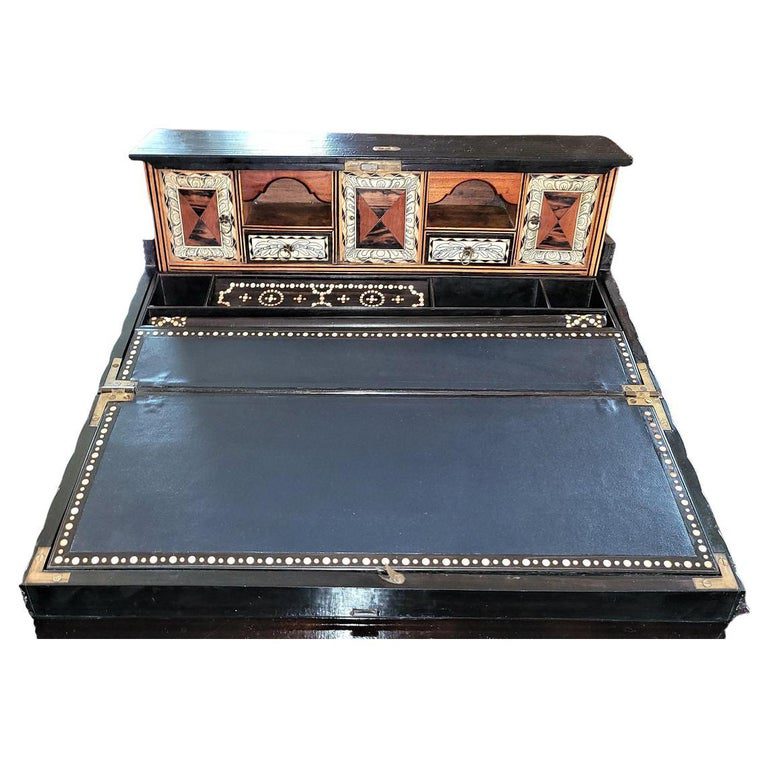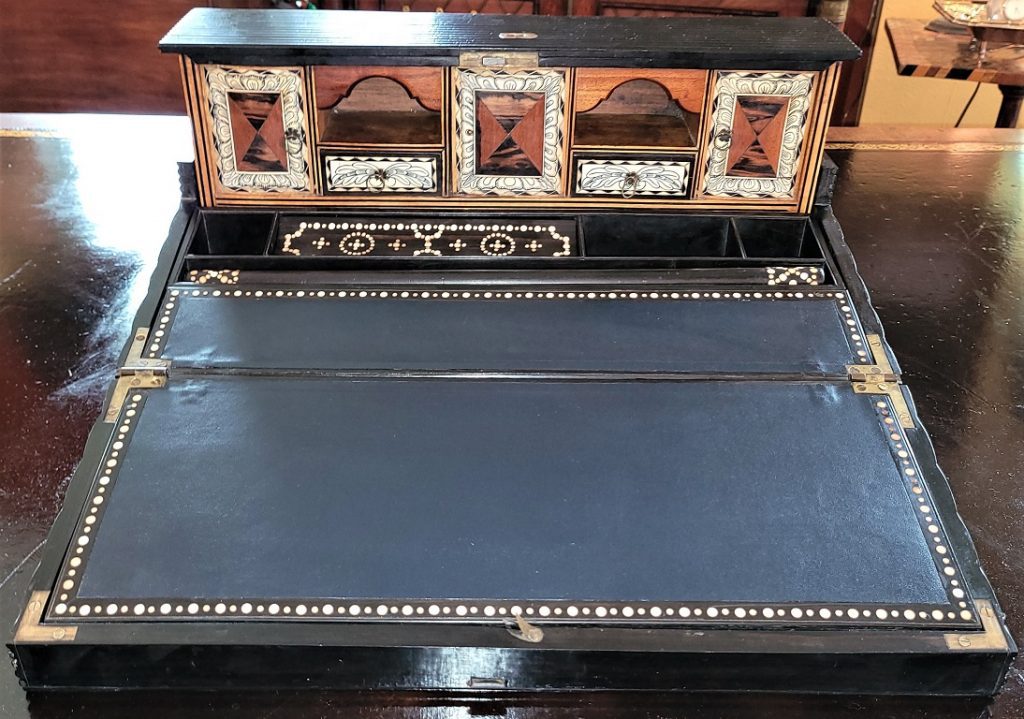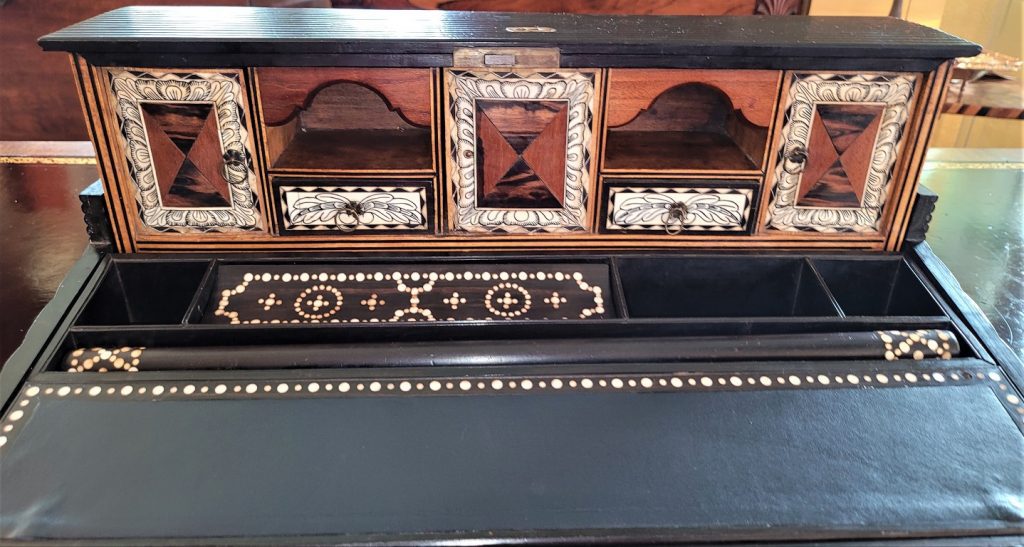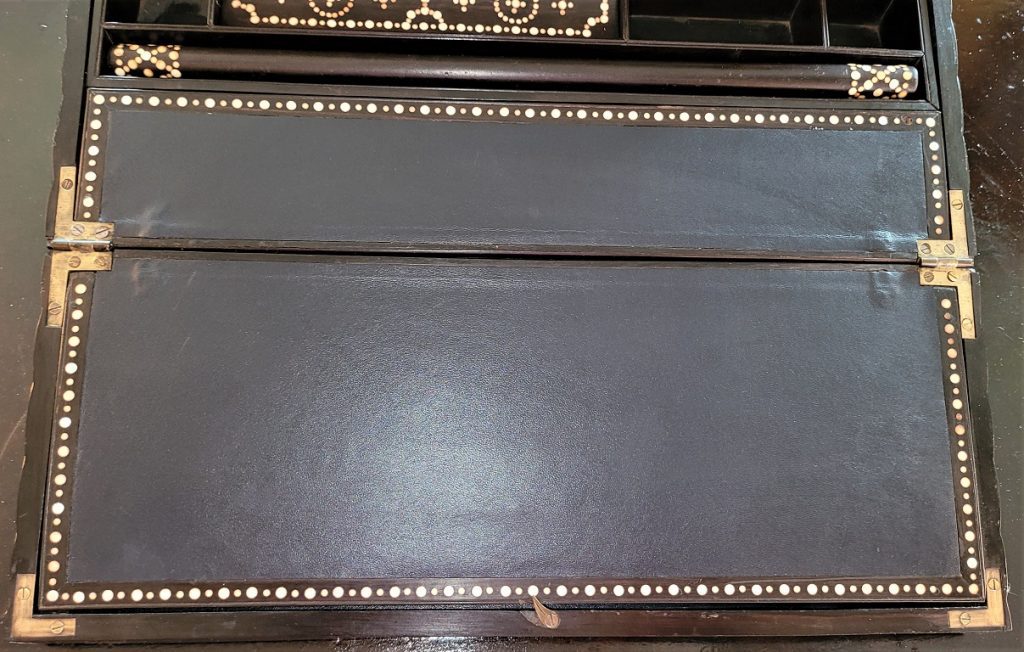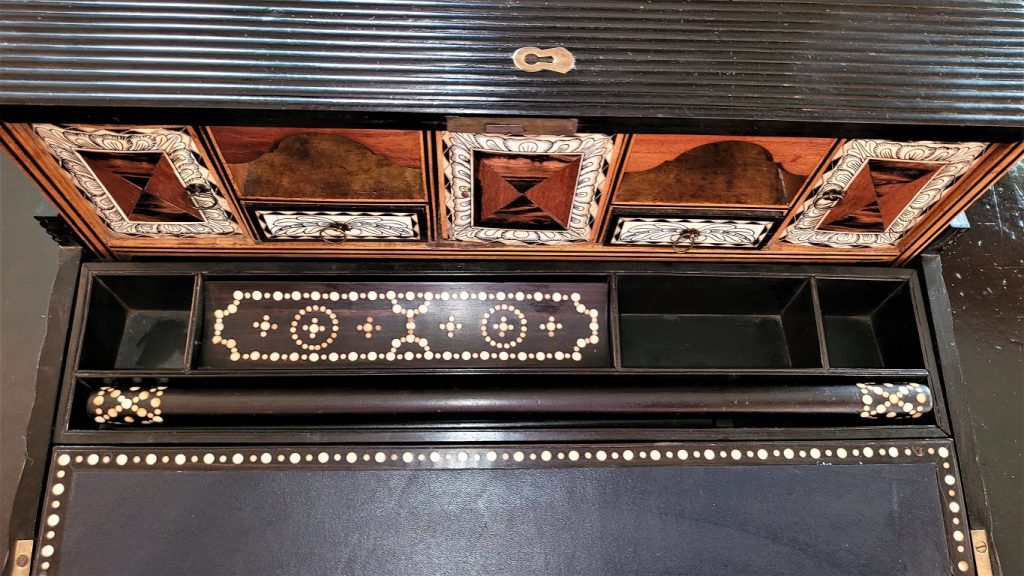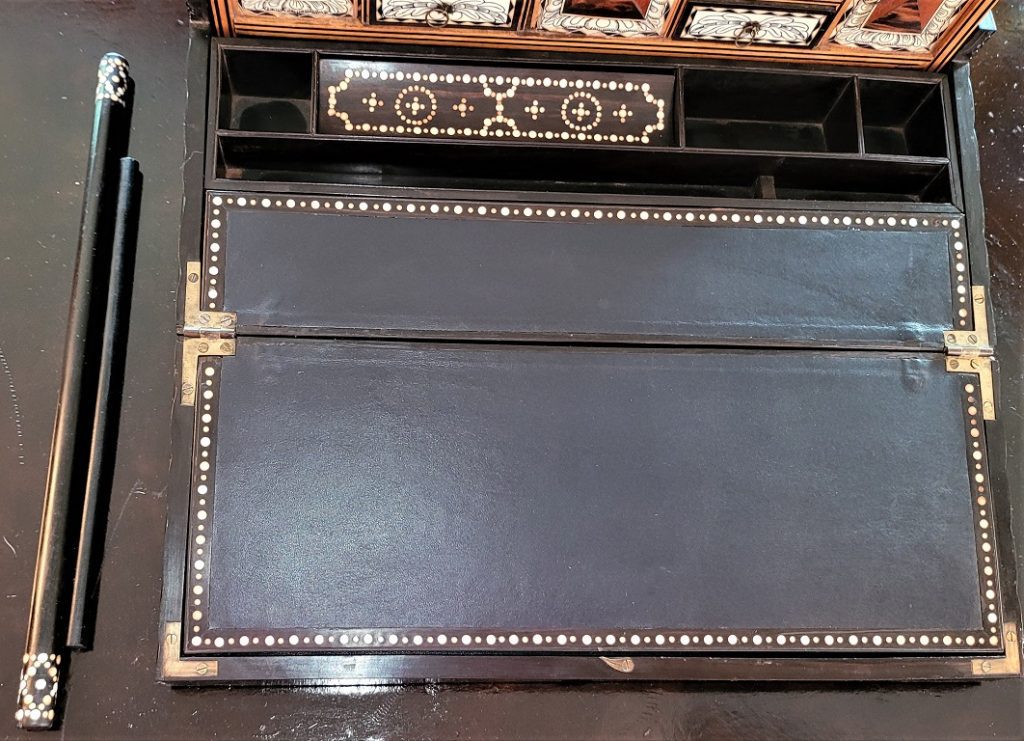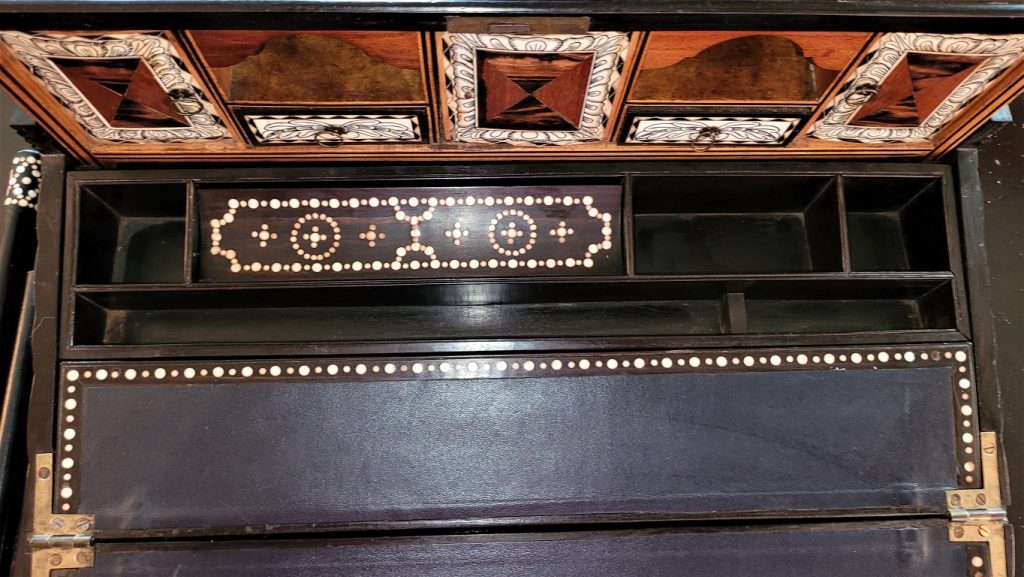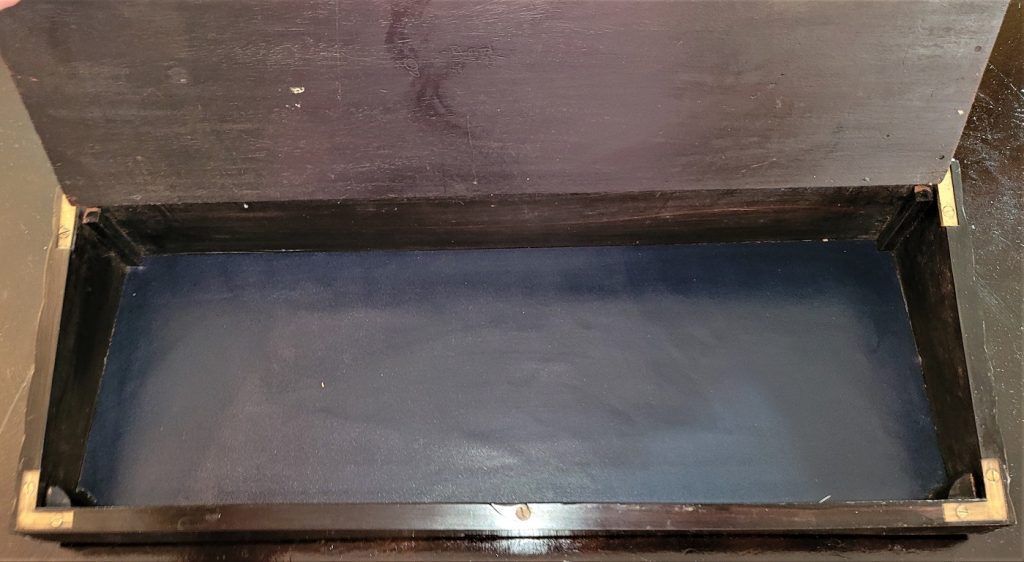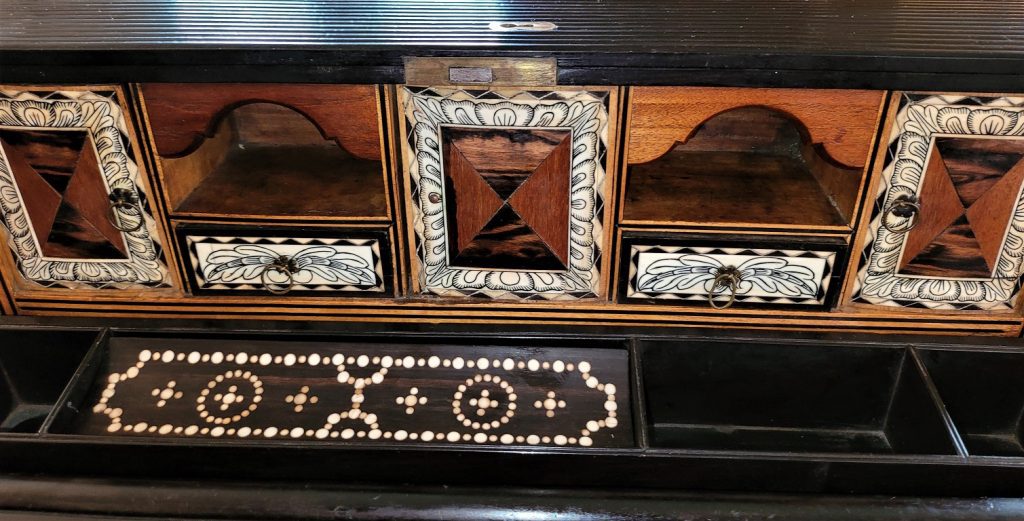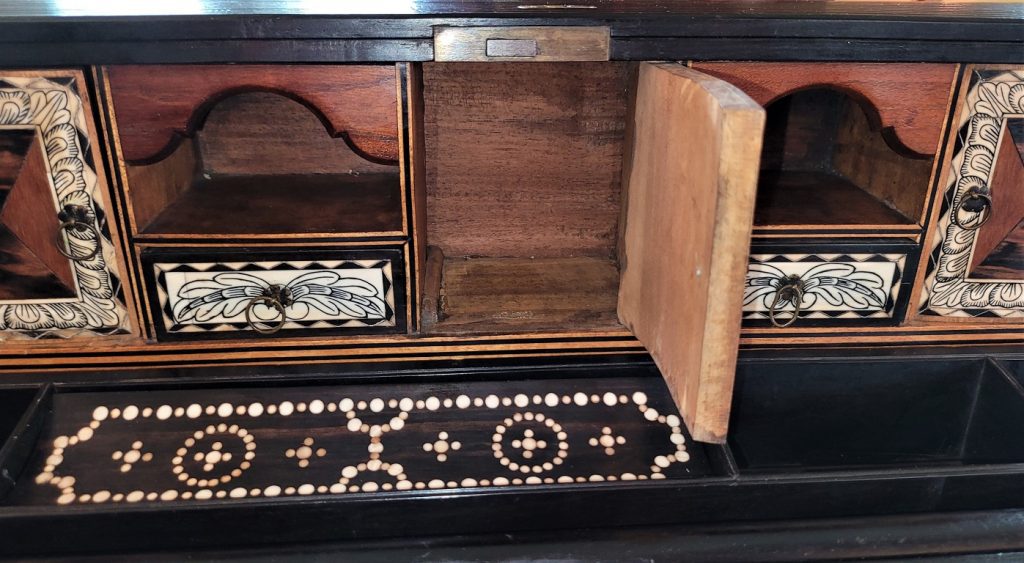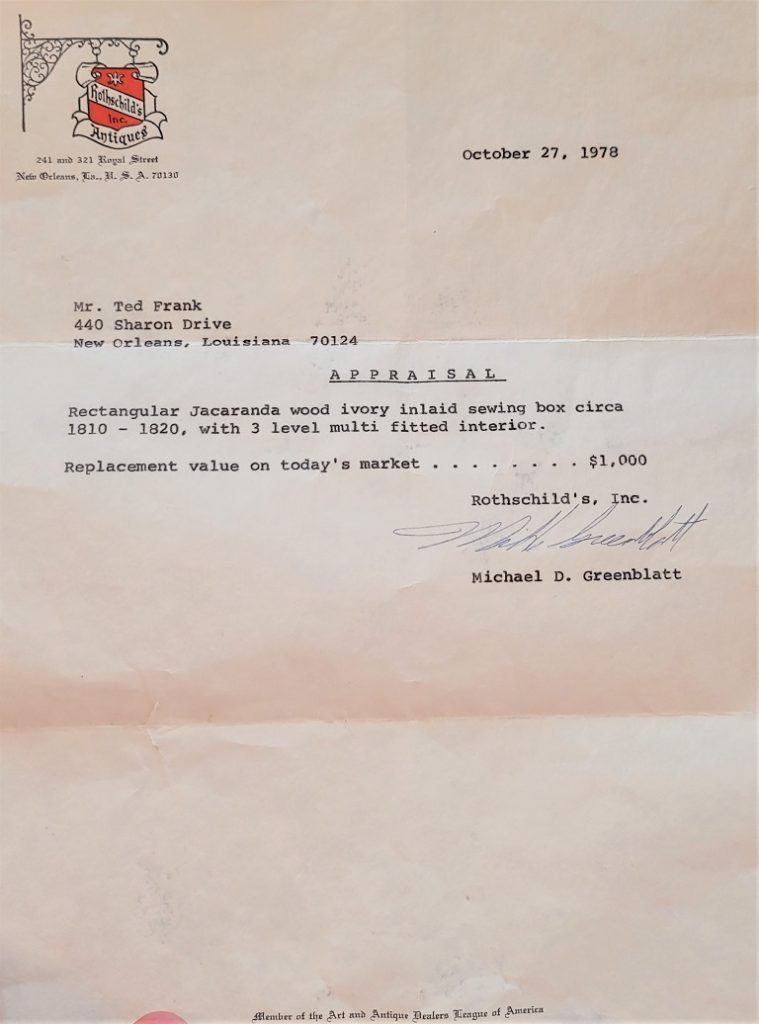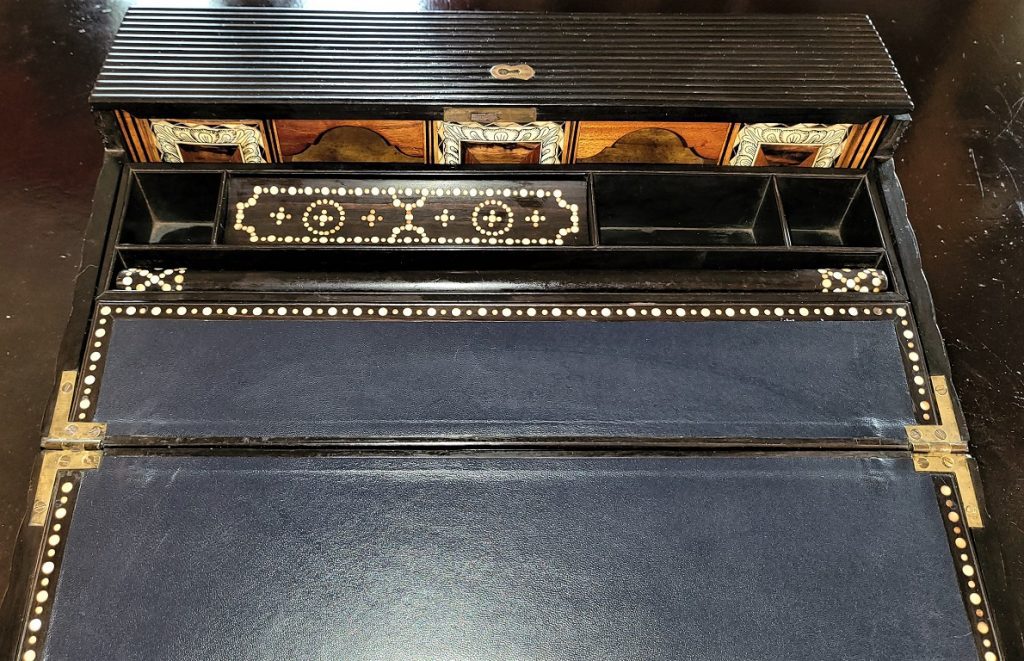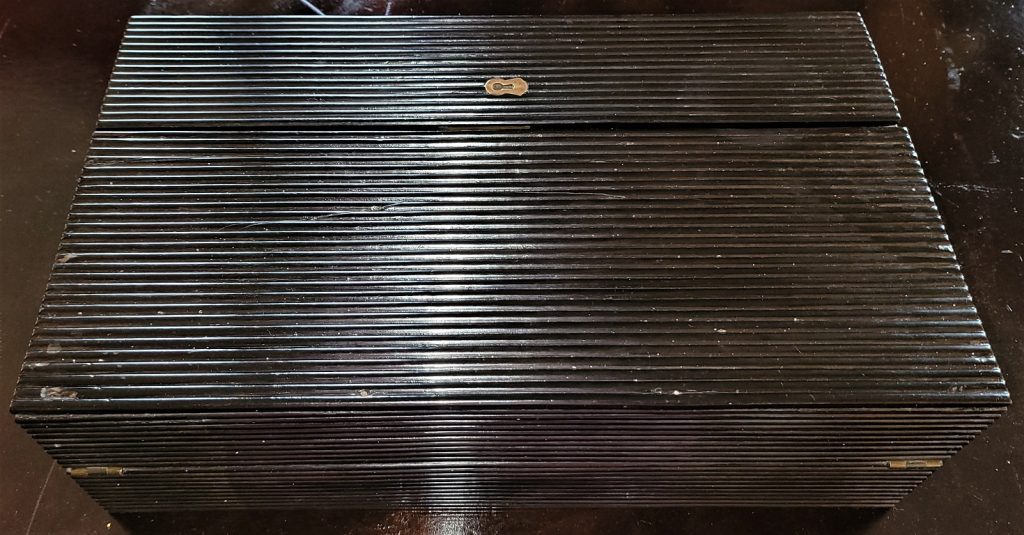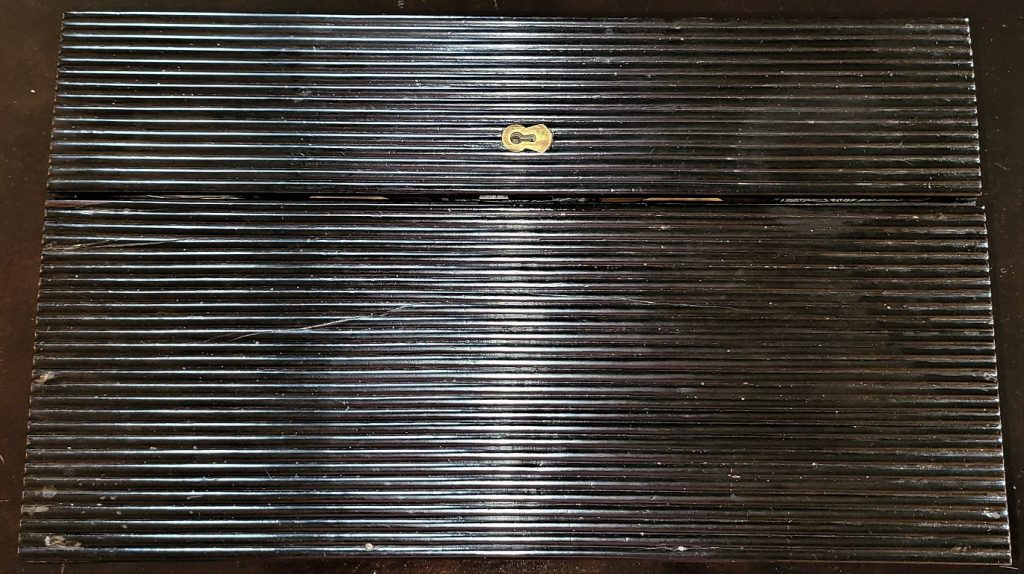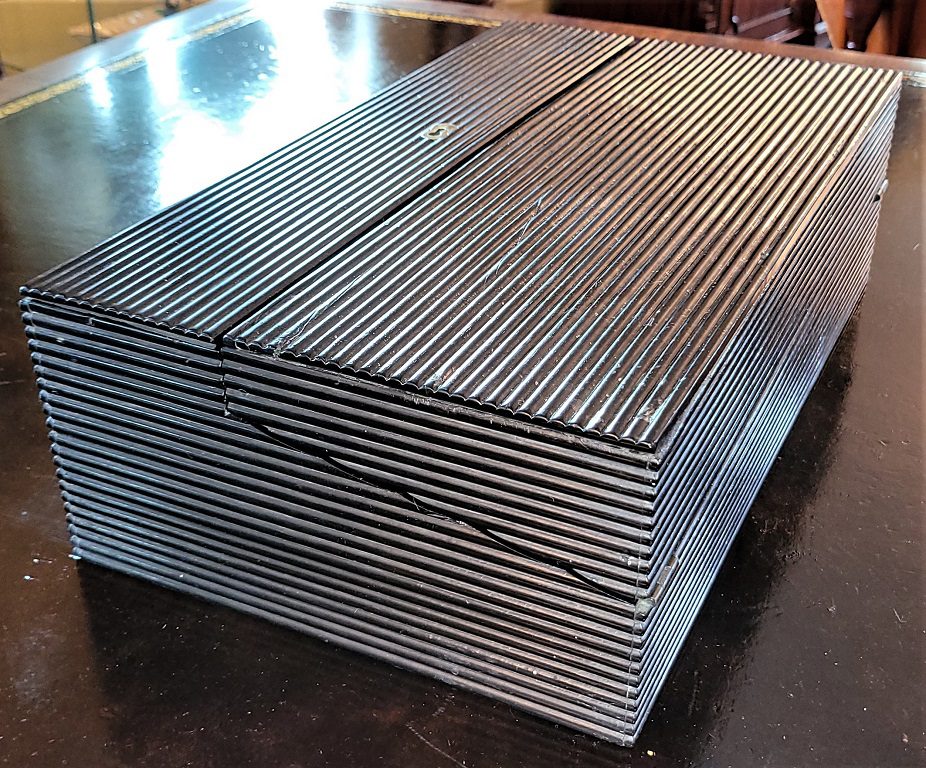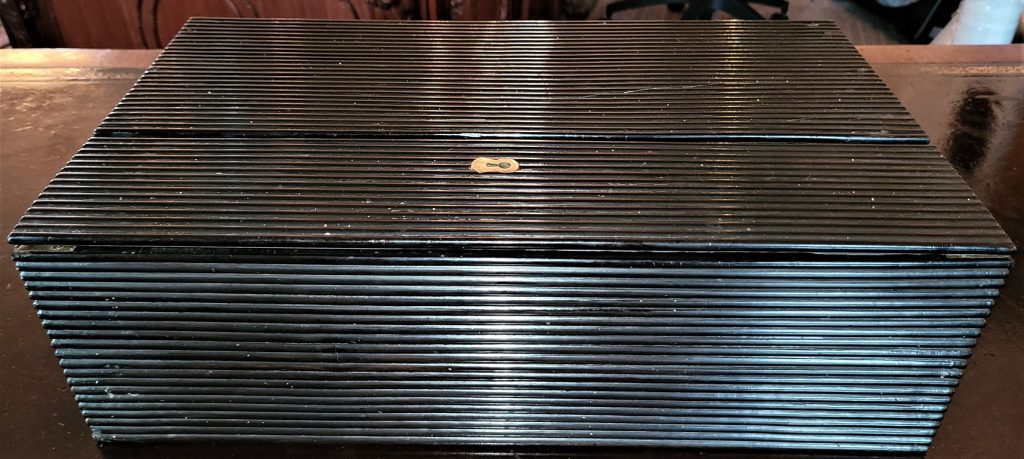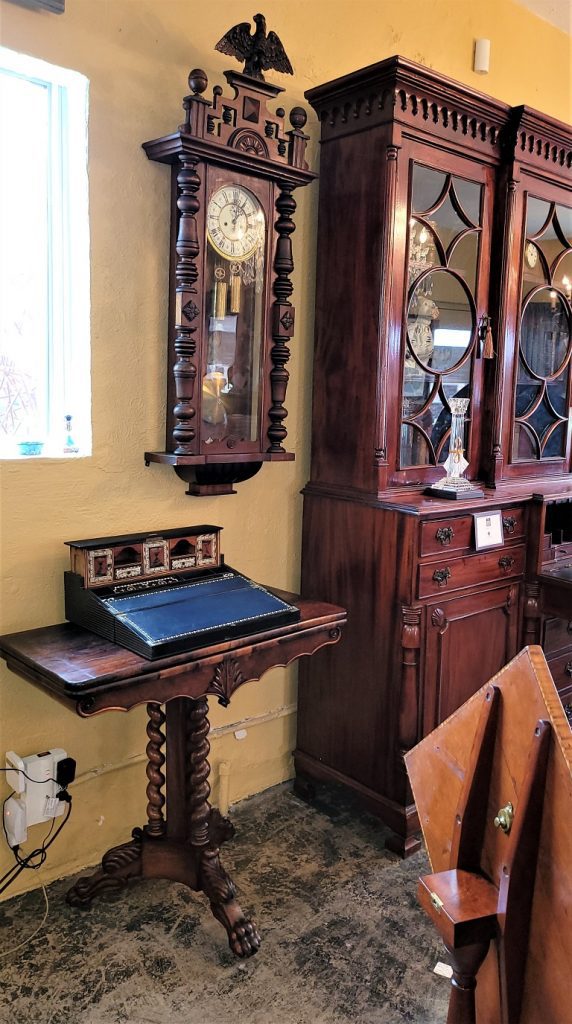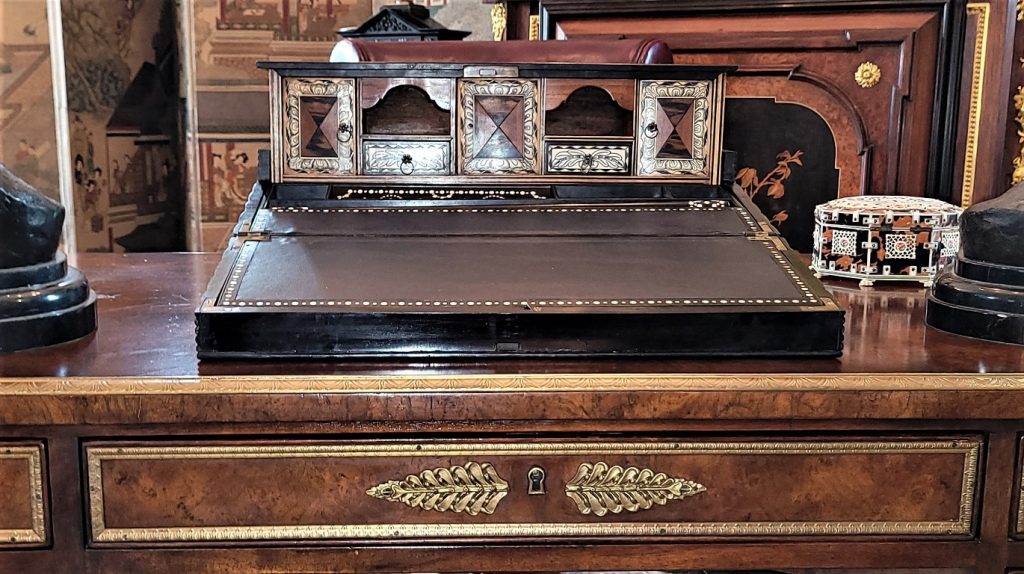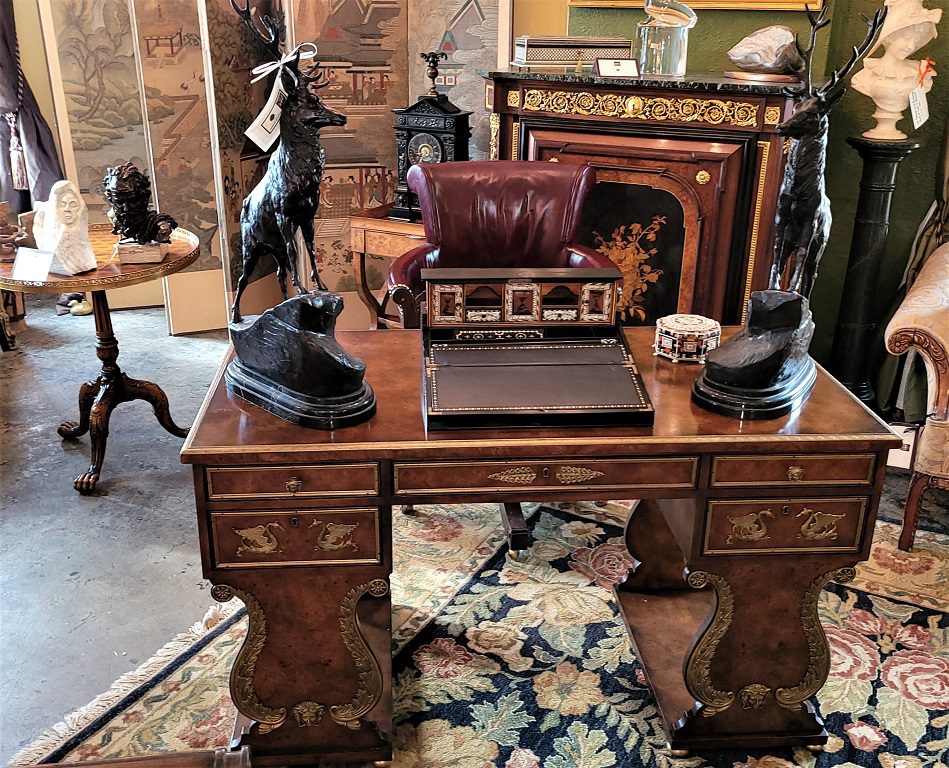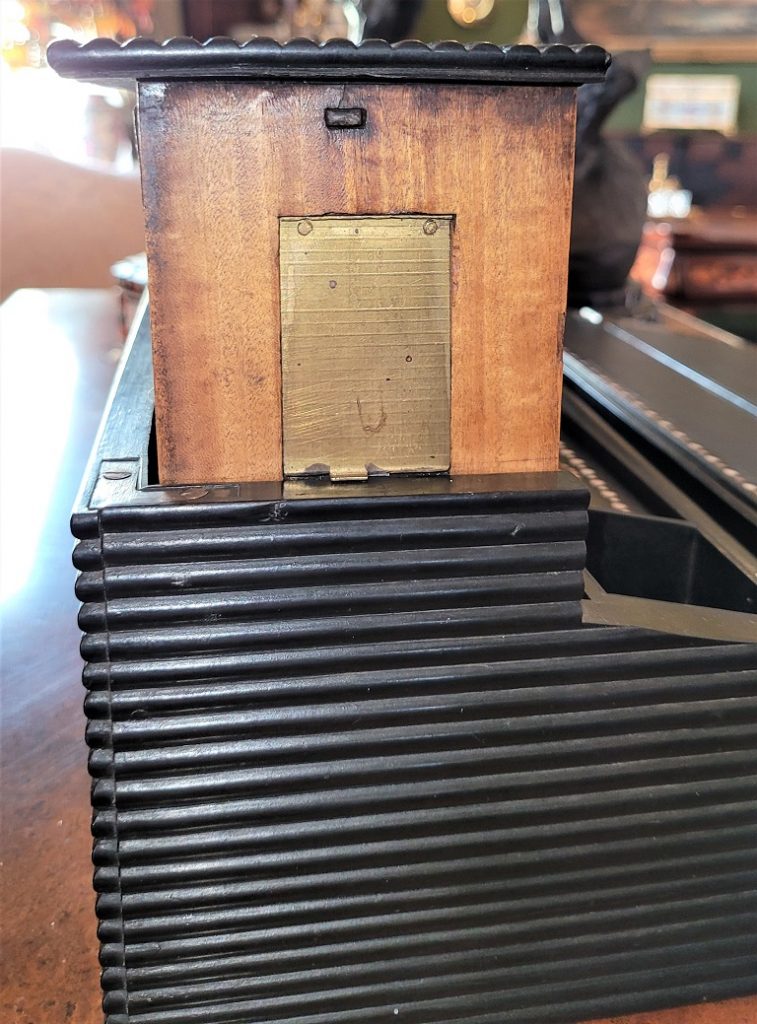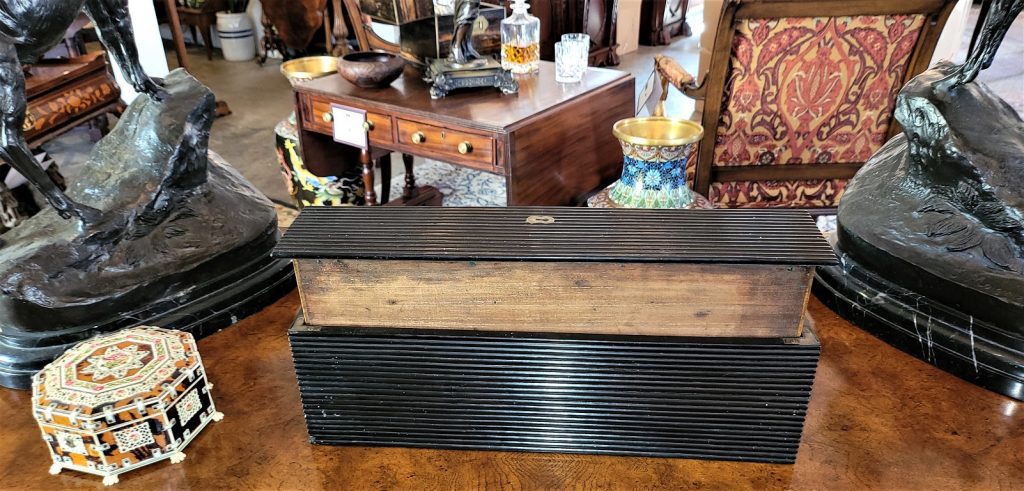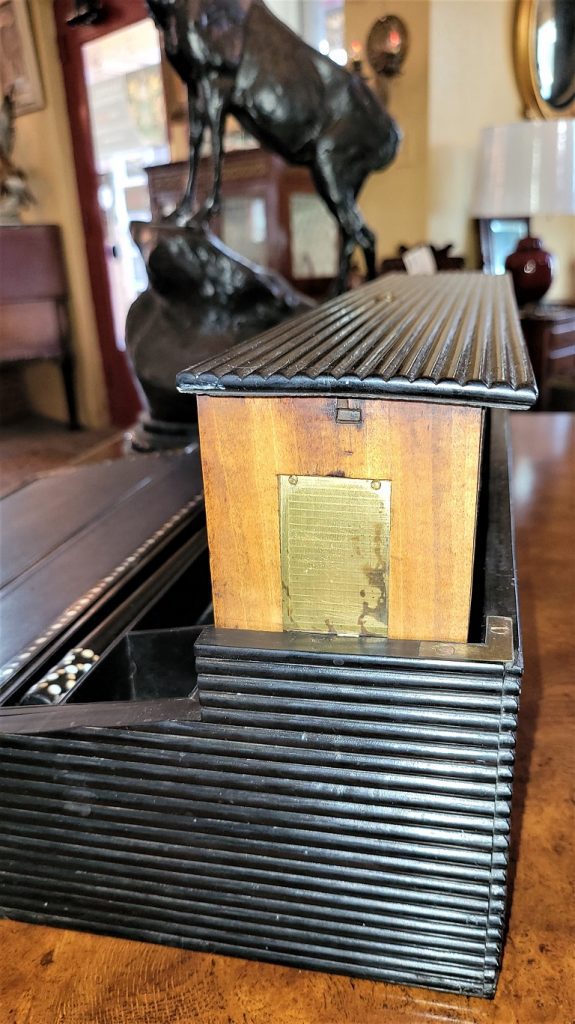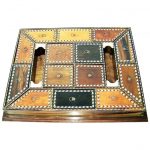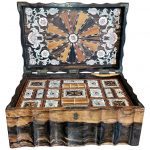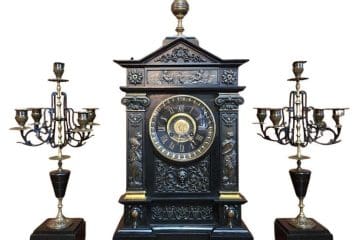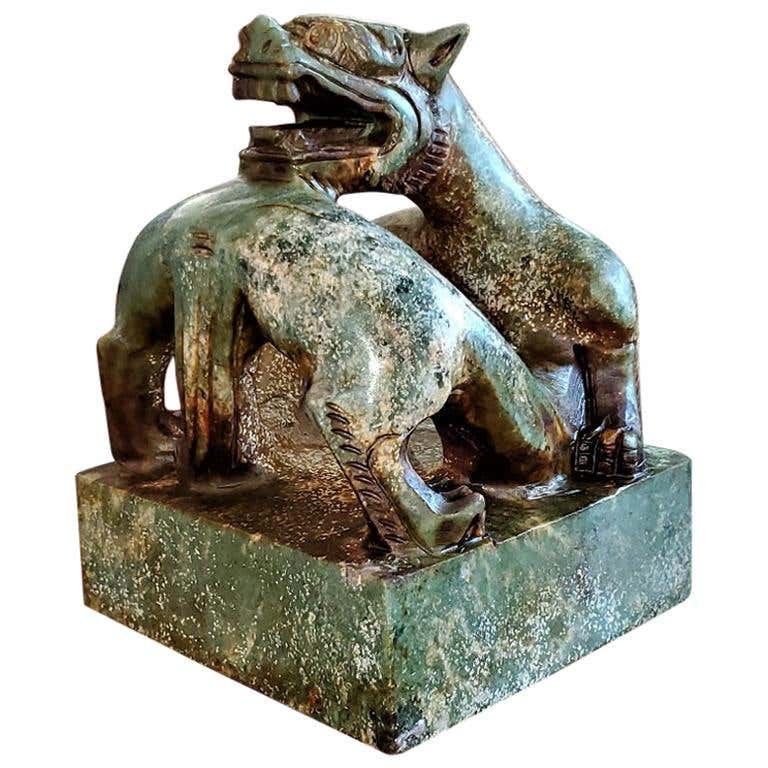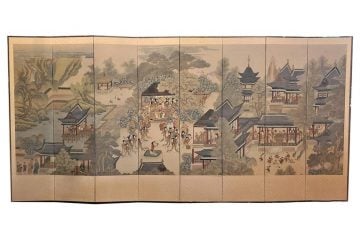19C Anglo Ceylonese Lap Desk of Museum Quality
PRESENTING AN ABSOLUTELY FANTASTIC 19C Anglo Ceylonese Lap Desk of Museum Quality.
We can safely say that this is one of the FINEST lap desks we have ever seen !
The Lap desk box is rectangular in shape when fully closed, with the most gorgeous reeding design of the wood all over. This ‘reeding’ in itself makes this box a VERY VERY RARE example.
The ‘box’ was appraised by the prestigious Rothchilds Antiques of NOLA in 1978 and given a value of $1,000 in 1978. Allowing for inflation alone this equates to over $4,200 in today’s value. As experts in Anglo-Indian and Anglo-Ceylonese items we are going to slightly disagree with Rothchilds on one issue: – We do not believe that this box is made from Jacaranda Wood. We believe it to be ebony and coromandel woods. The secondary wood is sandalwood.
Not only is they style and construction of the outer box very unusual and rare but the interior once opened is OUTSTANDING !
The box opens to reveal a writing slope with blue leather insert. Both the top section of the writing slope and the larger bottom section have a lift up lid to reveal a storage area underneath. The larger area is also lined with matching blue leather.
Above the writing slope is a sectioned area for holding writing accessories like inkwells, pens etc. The pend holding lid which is heavily decorated and inlaid with bone, lifts to reveal more space underneath. In the front section is have a highly decorated and inlaid with bone, tubular baton and a simple ebony tubular pointer. We have never seen this before !
The top section is a sliding section, that slides upwards on a pair of brass plates on each side, when fully open to reveal a STUNNING bureau area with 3 doors, 2 drawers and to 2 cubbies. Each is heavily decorated with bone, pewter or silver, inlaid specimen exotic hardwoods and hand painted chevron and floral decorations. The hardwood inlays in triangular sections replicate the look of tortoiseshell.
This section slides downwards to close the box.
This box would have been made in Ceylon (now Sri Lanka) during British occupation and control and would have been made specifically for the British market. It is a form of ‘campaign’ piece and would have been made for a very high ranking British Army Officer. It would have been a VERY EXPENSIVE PIECE WHEN MADE !!!
IT IS A MUSEUM QUALITY PIECE !
In super original condition, with only very minor blemishes through age and use. No key.
ANGLO-INDIAN AND CEYLONESE BOXES: Anglo Indian boxes were made in India for the English residents from the early part of the 18th century. They were brought back or sent back to England usually by the people who had commissioned them. From the beginning of the nineteenth century they were imported more commercially, although not in any significant numbers until the middle decades. They were very highly valued, especially the early ones, to the extent that the designs were copied on late 19th and early 20th century tins.
Anglo-indian Boxes normally consist of 3 main types:-
(1) Most of the best and highest quality Anglo-Indian boxes in the 18th and 19th Centuries were made in Vizagapatam, India, renowned for its exquisite craftsmanship in using ivory and tortoiseshell and lac decoration. These are referred to as ‘Vizagapatam Boxes’.
(2) The Bombay area became famous in the 19th Century for its carving of sandalwood boxes and use of Sadeli Mosaic. These are often referred to ‘Sadeli Boxes’.
(3) Many boxes of exquisite quality and craftsmanship were made in Ceylon (modern day Sri Lanka) in the 19th Century. Ceylon was part of the British Indian Colony and was not a seperate Country at that time, hence, the boxes that were made in Ceylon are often categorized as Anglo-Indian. Many of the Anglo-Ceylonese pieces were made in the Goa Region using Porcupine Quill, Coromandel or Salamander wood, ivory, ebony and lac decoration. The Ceylonese lac work was often more colorful than the Vizagapatam classic use of black lac ink.(Lac ink was an indelible ink made from crushing Lac Beetles). Ceylonese boxes and furniture also became famous, due to the use of various exotic specimen woods in the decoration of their boxes and furniture. These specimen wood pieces are HIGHLY PRIZED AND HIGHLY DESIRABLE !!
This box falls into Category 3 above ………………….. SPECTACULAR AND RARE !!
COROMANDEL WOOD: Calamander wood or Coromandel wood is a valuable wood from India, Sri Lanka (Ceylon) and South East Asia. It is of a hazel-brown color, with black stripes (or the other way about), very heavy and hard. It is also known as Macassar Ebony or variegated ebony and is closely related to genuine ebony, but is obtained from different species in the same genus; one of these is Diospyros quaesita Thwaites, from Sri Lanka. The name Calamander comes from the local sinhalese name, ‘kalu-medhiriya’, which means dark chamber; referring to the characteristic ebony black wood. It is used in furniture, Luthiery and for sculpture.
Coromandel wood has been logged to extinction over the last 2 to 3 hundred years and is no longer available for new work in any quantity. Furniture in coromandel is so expensive and so well looked after that even recycling it is an unlikely source. A substitute, Macassar Ebony, has similar characteristics and to the untrained eye is nearly the same but it lacks the depth of colour seen in genuine Coromandel.
Link: https://en.wikipedia.org/wiki/Calamander_wood
19C Anglo Ceylonese Lap Desk of Museum Quality.
Provenance: Part of our Extensive Anglo-Indian Collection.
Dimensions: Closed the Box is 16.9″ Wide, 10″ Deep and 5.25″ High
Fully Open the box is 8″ High, 16.9″ Wide and 16.5″ Deep
Condition: Excellent original condition. No Key.
